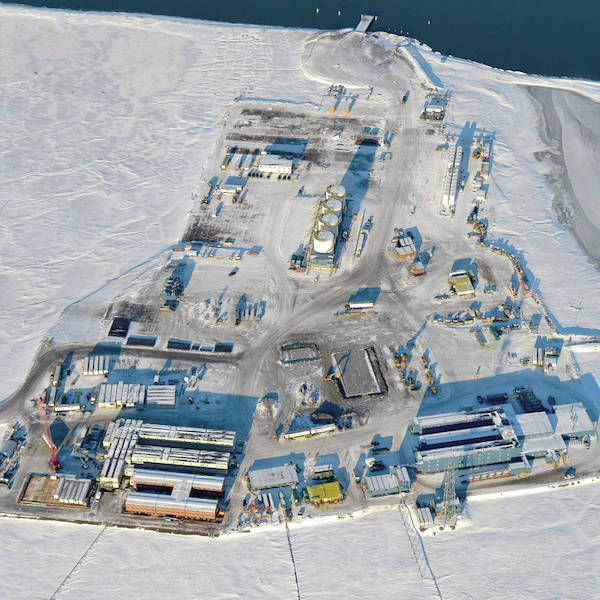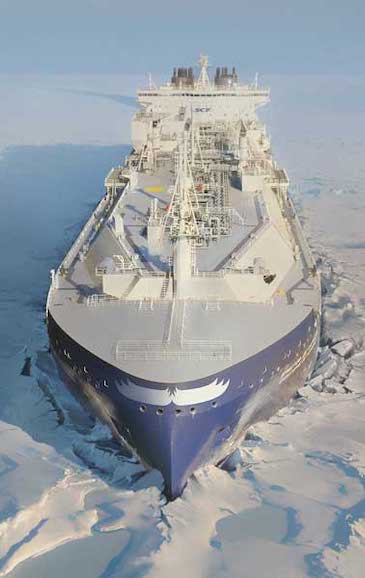🇺🇸 $5bn Alaska LNG project aims to replace Yamal gas in Asia
The project, equal to 1% of global natural-gas demand, should be launched by 2030 when potential buyers see a shortage coming up

By Katya Golubkova, Reuters
TOKYO — QILAK LNG plans to invest $5 billion (€4.75 billion) in a proposed liquefied-natural-gas facility in Alaska’s North Slope to compete with Russia’s Yamal project for Asian customers towards the end of this decade, its chief executive said.
Major LNG importers such as Japan, South Korea and Taiwan are rethinking Russian supplies after sanctions on Moscow after it invaded Ukraine and more natural gas could be needed to produce lower-emission and alternative fuels as countries try to reduce their carbon emissions.
Qilak is 3,700km closer to Asian markets than its biggest competitor, the Novatek-led Yamal LNG in the Russian Arctic. The Alaskan projects aims to ship a LNG cargo to Asia in 14 days, about twice as fast as shipments from the US Gulf Coast, Mead Treadwell*, Qilak’s CEO and chair, told Reuters in an interview this week.
“This project could open up a whole new province of supply for LNG, ammonia and hydrogen … . There are geopolitical advantages, and diversifying Arctic gas supplies away from Russia is generally a well received concept,” Mr Treadwell said.
The company is banking on producing LNG at a lower cost compared with Yamal LNG.

Yamal LNG shipped its first cargo in 2017. Company data show its uses €26 billion to liquify its annual production of 16.5 million tons of LNG. That is about €1.5 billion per 1 million tons, according to Reuters calculations.
Qilak’s annual output is set to be 4 million tons and at a cost of €4.75 billion, should be €1.2 billion per ton, according to Reuters calculations.
Qilak LNG is working with Lazard as investment bank to attract financing and also plans to offer an ownership stake to Alaska entities including indigenous investment groups, said Mr Treadwell, a former lieutenant governor of Alaska.
“We are speaking to potential investors inside and outside Japan, as well as firms that can help us reduce the carbon footprint of the project,” he said, without providing further details.
The project, equal to 1% of global LNG demand, should be launched by 2030 when potential buyers see a shortage coming up, a delay from 2027 because of the COVID-19 pandemic, Mr Treadwell said.
“We are focusing on the north-east Asian market — there are countries beyond the north-east Asia who are considering involvement to step up their LNG purchases,” he said, adding that Japan’s current and future LNG receiving terminals could be also used for transhipment.
Qilak LNG is yet to chose engineering, procurement and construction, as well as shipping companies, but Nana Worley and Aker Arctic Technology are expected to lead the feasibility study, Mr Treadwell said.
“If we stay on schedule then the feasibility study would be done this year and with front-end engineering design in 2024,” he said, adding that a final investment decision is possible in 2025, depending on a number of conditions.
The project plans to use gravity-base structures — special weighted legs that support offshore platforms — set off the Arctic shore of Alaska and would deliver three to five tankers per month to Asia, according to Dubai-based Lloyds Energy, the project’s owner.
It plans to use the same type of ice-breaking Arc7 LNG tankers that Yamal operates, Mr Treadwell said.
(Reporting by Katya Golubkova; Editing by Florence Tan and Christian Schmollinger)
*Mr Treadwell is member of the board of ABJ’s parent organisation Arctic Today.
FURTHER READING
• Following the lead of Russia’s Yamal LNG, a new plan for Alaska natural gas proposes skipping the costly pipeline
• A major Alaska Arctic natural gas plan now looks economically dubious — but it just passed a major milestone
• Under settlement, ExxonMobil proposes more oil production at Point Thomson field
• Feasibility study for Qilak LNG (Aker Arctic)
This article has been fact-checked by Arctic Business Journal and Polar Research and Policy Initiative, with the support of the EMIF managed by the Calouste Gulbenkian Foundation.
Disclaimer: The sole responsibility for any content supported by the European Media and Information Fund lies with the author(s) and it may not necessarily reflect the positions of the EMIF and the Fund Partners, the Calouste Gulbenkian Foundation and the European University Institute.
